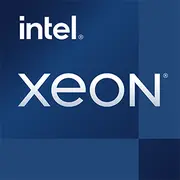Intel Xeon E3-1515M v5

인텔 제온 E3-1515M v5: 2025년 전문가들을 위한 모바일 워크호스
2025년 시장 조건에서 프로세서의 기능, 사용 사례 및 актуальность 분석
아키텍처 및 제조 공정: 신뢰성의 기초
2016년에 스카이레이크 아키텍처로 출시된 인텔 제온 E3-1515M v5 프로세서는 2025년에도 모바일 워크스테이션을 위한 틈새 솔루션으로 남아 있습니다. 이 프로세서의 주요 특징은 다음과 같습니다:
- 4개의 코어와 8개의 스레드로 기본 클럭은 2.8GHz, Turbo Boost는 3.5GHz까지 지원합니다.
- 14nm 제조 공정으로 출시 당시에는 최첨단으로 여겨졌지만, 2025년에는 현대의 5nm (Apple M4) 및 4nm (AMD Zen 5) 솔루션에 비해 뒤처집니다.
- 72개의 실행 유닛과 128MB의 eDRAM을 지닌 Iris Pro P580 통합 그래픽으로 4K 디스플레이 작업, 비디오 처리 및 기본 수준의 VR 애플리케이션 실행을 지원합니다.
아키텍처의 특징:
- ECC 메모리 지원 - 데이터 오류가 용납되지 않는 작업 공간(예: 엔지니어링 계산, 렌더링)에 필수적입니다.
- 하이퍼 스레딩 및 Turbo Boost 2.0 기술로 멀티스레드 성능을 최적화하고 하중에 따라 주파수를 적응적으로 증가시킵니다.
전력 소비 및 TDP: 성능과 배터리 수명 사이의 균형
TDP가 45W인 이 프로세서는 강화된 냉각 시스템이 있는 노트북—워크스테이션 및 프리미엄 게이밍 모델에 최적화되어 있습니다. 비교 자료는 다음과 같습니다:
- 20-25W TDP의 현대적인 Apple M4(2025)는 멀티스레드 작업에서 유사한 성능을 보여줍니다.
- AMD Ryzen 7 7840U(28W TDP)는 ECC 지원 없이 8개의 Zen 4 코어를 제공합니다.
에너지 효율성:
- 대기 모드에서는 Enhanced SpeedStep 덕분에 주파수를 800MHz로 낮춥니다.
- 최대 부하 시(예: Blender에서 렌더링) 소비 전력이 50-55W에 달하며, 이는 활성 냉각을 필요로 합니다.
성능: 실제 작업과 터보 모드
사무 작업과 멀티태스킹:
- 20개 이상의 탭을 가진 브라우저와 Excel/Word에서의 병행 작업을 하더라도 프로세서는 반응성을 유지합니다. Geekbench 6 Single Core 점수는 1322로, 이는 Intel Core i5-1240P(2023)와 비슷하여 쾌적한 작업이 가능합니다.
멀티미디어:
- Premiere Pro(1080p)에서 10분 비디오 렌더링: Apple M3(2023)의 4-5분에 비해 8-10분 소요됩니다.
- Iris Pro P580은 H.265 인코딩을 처리할 수 있지만, NVIDIA RTX A500(2025)와 같은 개별 GPU에는 미치지 못합니다.
게이밍:
- 중간 설정(1080p)에서의 CS2: 45-55 FPS.
- Cyberpunk 2077 (Low, 720p): 25-30 FPS — 비정기적인 세션에는 괜찮지만, 열렬한 게이머에게는 적합하지 않습니다.
Turbo Boost:
- 터보 모드에서는 코어 주파수가 3.5GHz로 상승하지만, 5분 이상의 지속 부하에서는 과열로 인해 스로틀링이 발생할 수 있습니다.
사용 사례: E3-1515M v5가 적합한 대상은?
1. 엔지니어 및 디자이너: CAD 애플리케이션(AutoCAD, SolidWorks)에서 ECC 메모리 지원을 통한 안정성.
2. 이동 중 비디오 편집자: Iris Pro P580은 렌더링을 가속화하며, 45W TDP로 인해 디스크리트 GPU가 있는 모델보다 더 얇은 노트북을 만들 수 있습니다.
3. 데이터 전문가: 서버 자원 없이 Python/R에서 중간 규모의 데이터 로컬 처리.
부적합한 경우:
- 하드코어 게이머(디스크리트 그래픽 필요).
- 배터리 수명이 6시간 이상이 절실한 사용자.
배터리 수명: 성능에 대한 대가
E3-1515M v5가 탑재된 노트북은 70-90Wh의 배터리로 제공됩니다. 실제 조건에서:
- 웹 서핑: 4-5시간.
- Adobe Photoshop에서 작업: 2.5-3시간.
- 절전 모드(터보 끄기, 밝기 감소): 최대 6시간.
절약 기술:
- Intel Speed Shift - 주파수 동적 관리.
- Panel Self-Refresh - 디스플레이의 전력 소비 저감.
경쟁 제품과의 비교
인텔 제온 E3-1515M v5:
- 코어/스레드: 4/8
- TDP: 45W
- ECC 메모리: 예
- 게이밍 (CS2, 1080p): 45 FPS
- 노트북 가격 (2025): $1600-2200
AMD Ryzen 7 PRO 6850H:
- 코어/스레드: 8/16
- TDP: 45W
- ECC 메모리: 예
- 게이밍 (CS2, 1080p): 60 FPS (Radeon 680M)
- 노트북 가격 (2025): $1400-2000
Apple M3 (2023):
- 코어/스레드: 8/8 (4+4)
- TDP: 20W
- ECC 메모리: 아니오
- 게이밍 (CS2, 1080p): 40 FPS (에뮬레이션)
- 노트북 가격 (2025): $1700-2500
결론:
- ECC 및 신뢰성을 중시한다면 — Xeon.
- 멀티스레드 성능을 원한다면 — Ryzen.
- 배터리 수명이 중요하다면 — Apple.
장단점
강점:
- ECC 메모리 지원.
- 해당 클래스에서 강력한 통합 그래픽.
- 전문 소프트웨어 최적화 (SolidWorks, AutoCAD 인증).
약점:
- 현대 프로세서에 비해 높은 전력 소비.
- 2025년 경쟁 제품에 비해 4 코어 vs 8-12 코어.
노트북 선택을 위한 추천
1. 장치 유형: 모바일 워크스테이션 (Dell Precision 3510, HP ZBook 15 G3).
2. 냉각: 두 개의 팬과 구리 열관이 필수입니다.
3. 메모리: 최소 32GB DDR4 ECC 메모리.
4. 저장 장치: 1TB NVMe SSD (신뢰성을 위해 RAID 1이 바람직함).
5. 디스플레이: 100% sRGB 커버리지를 갖춘 4K IPS.
신규 장치 평균 가격: $1800-2500 (2025년 4월).
최종 결론
2025년의 인텔 제온 E3-1515M v5는 안정성과 특수 기능(ECC, 소프트웨어 인증)을 중시하는 전문가들에게 적합한 선택입니다. 에너지 효율성과 멀티스레드 성능에서 현대 CPU에 비해 뒤떨어지지만, 모바일 워크스테이션의 틈새 시장에서 대체 불가능한 존재입니다. CAD 모델링, 현장 렌더링 또는 오류 없는 데이터 처리가 필요한 경우 이 프로세서는 투자 가치를 제공합니다. 나머지 모든 시나리오(게임, 사무, 미디어 소비)에서는 더 현대적이고 경제적인 솔루션을 선택하는 것이 좋습니다.
기초적인
CPU 사양
메모리 사양
GPU 사양
여러 가지 잡다한
벤치마크
다른 CPU와 비교
소셜 미디어에서 공유하기
또는 링크로 소개하기
<a href="https://cputronic.com/ko/cpu/intel-xeon-e3-1515m-v5" target="_blank">Intel Xeon E3-1515M v5</a>